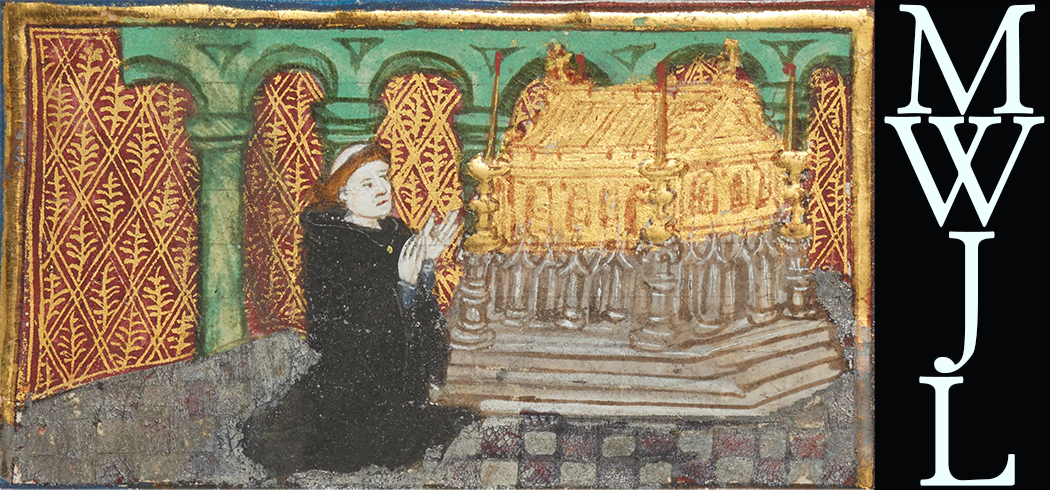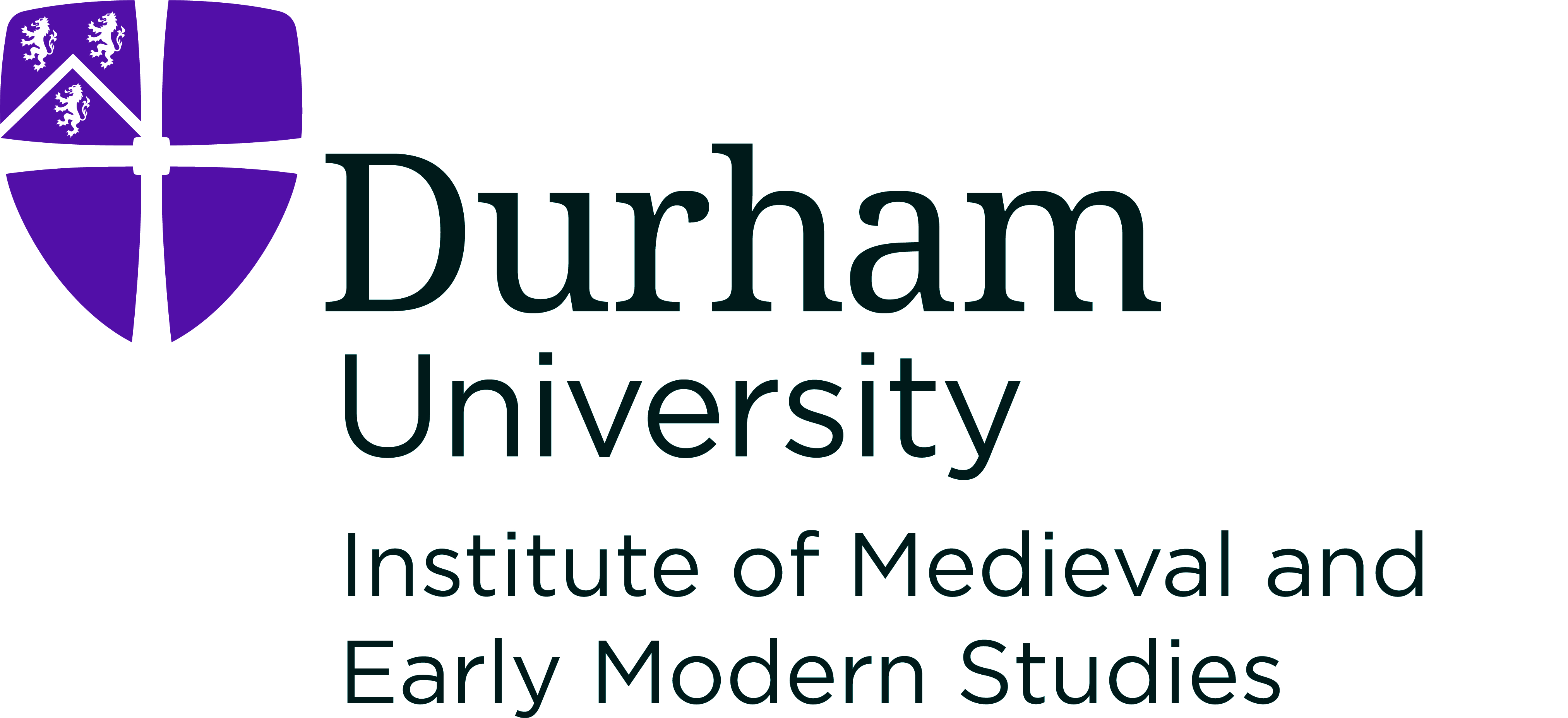 A Mumming for the Mercers of London:
Trinity R.3.20 Verses
A Mumming for the Mercers of London:
Trinity R.3.20 Verses
HomeAbout the ArchiveAbout John LydgateWorksManuscriptsAbout this ManuscriptEditorial ApparatusContactVisualization
Folio 85 Verso (Page 172)
Compare Witnesses: •
¶
desgysing made to Estfeld þane • Notes
-
The initial was performed at a later date and the original initial and verse marker was partially erased in order to do so ↩
-
"Jupiter ruling in all things." ↩
-
"Phoebus is the Sun" ↩
-
There is a glyph next to "love" here, but it is not clear what the glyph stands for. It appears to be a tironian et, with stroke and a curved suspension mark over it, written over the terminating mark used for marginalia throughout. BL. Add. 29729 also has the tironian "et" as well. The EETS edition does not note this glyph at all. ↩
-
BL Add. 29729, the other extant witness of this work, does not have this word. ↩
-
This word appears to be bracketed on both sides, but based on the practice in most other places in this witness I think it more likely what we're seeing is a combination of the virgule and the line-ending otiose mark we see terminating some lines. ↩
-
There is an otiose mark crossing the bottom of the thorn here. ↩
-
There is a suspension over the terminal glyph, which is not recognized in the EETS or TEAMS editions. ↩
-
There is what appears to be a supension mark over the "n" here, which would make the word "beonn." This mark is quite light, though, and the way that "beon" is written (see the next marginal note, for example) elsewhere suggests that it is meant to be otiose. ↩
-
The terminal glyph is quite poorly formed, but appears to be a terminal "s" with a suspension mark between it and the prior glyph, a "t," which would make the word "sustres" as expected. ↩
-
MacCraken does not capitalize "river" in the EETS edition, but comparison with "ryche" in line two of this verse and "ravisshe" in line five of verse six suggests it should more properly be capitalized. ↩
-
there is an otiose mark in the shape of a plus over the e in "sonne." At first glance it appears that it might be a suspension mark, but the existing glyphs make that unlikely. ↩
-
Rather than the single stroke that indicates a new marginal note in other places this note begins with two strokes, then the explanatory note regarding Bacchus. After that note, there is a single stoke, then the explanatory note regarding Thagus. MacCraken, when rendering this note in the EETS edition, has combined them and added an "and." ↩
-
The suspension mark here suggests that this is meant to be a double "r." BL Add. 29729 has "myrrour," but the EETS edition is "myrour." ↩
-
The third glyph could be an o or an e based on other examples in the manuscript. It appears to be closer to the box form o, however. ↩
-
There's a mark to the left of "of" here, but since the reference to Petrarch is prefaced with it's own mark this mark appears to be otiose. ↩
-
There is a suspension mark over the t here, but I believe it is likely meant to be attached to the previous glyph, "n." As such, it would be "daunte" or "dannte" rather than "dante." BL Additional 29729 has "daunt" here so I beleve it to be "dannte" ↩







